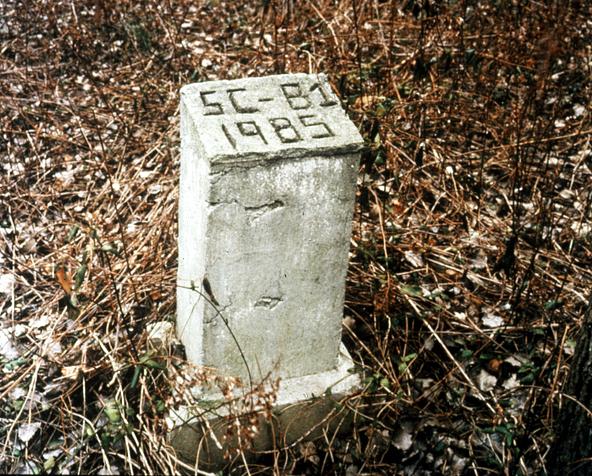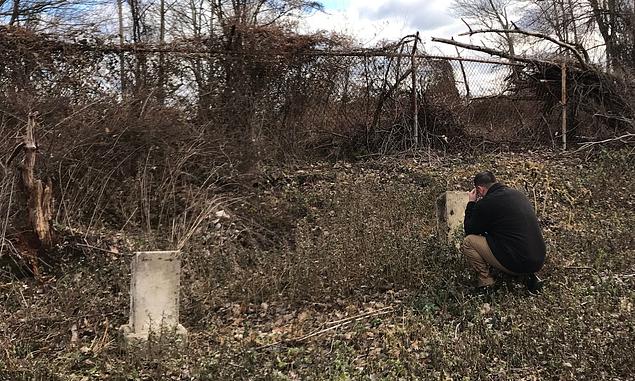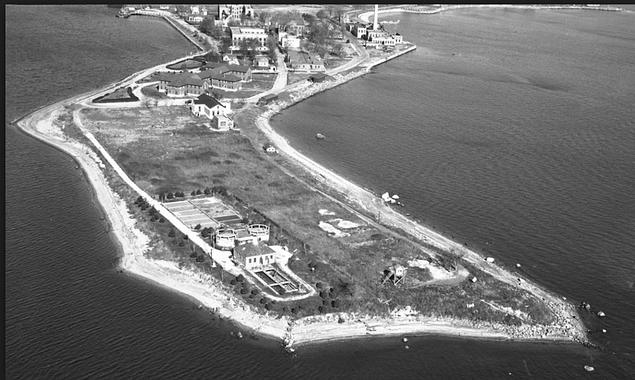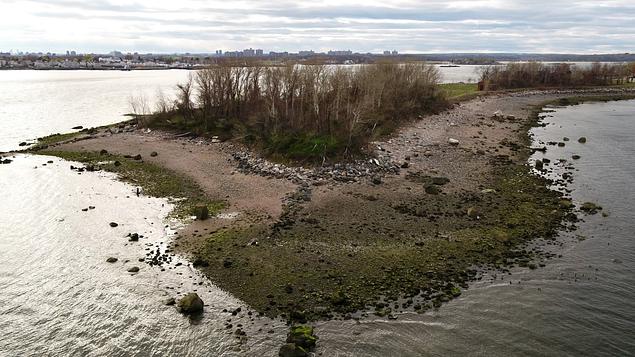Site of Negro Coney Island & AIDS burials
(1925 and 1983-86, respectively)
In the early 20th Century, New York City owned all but four acres of Hart Island. Those four acres on the south end of the island belonged to John Hunter, a member of the same family that sold the larger portions of the island to the City in 1868. Hunter offered to sell the remaining four acres to the City in 1922, but the City passed on the offer, so he sold the acres to Solomon Riley, a millionaire and Harlem developer, for $35,000 in 1924. Mr. Riley announced plans in 1925 to open an amusement park on Hart Island for people of color living in Harlem who were not permitted to visit amusement parks in nearby Rye and Dobbs Ferry.
The planned amusement park became known as “Negro Coney Island.” According to The New York Times, “Mr. Riley's workers constructed a dance hall, eight boardinghouses, and a 200-foot boardwalk, and converted an old ice boat into a bathing pavilion. In June, Mr. Riley announced plans to buy a fleet of 60 motorboats to ferry customers from the mainland. Corrections officials cringed, suddenly afraid that the park would invite escape attempts, smuggling and unrest among the prison population…” So, to prevent Riley from progressing further, the City acquired the property by condemnation and purchased it from him for $144,000. They then demolished the buildings and built a sewage treatment facility on the location.
In 1983, the New York State Funeral Directors Association issued a warning against embalming the bodies of people who died of AIDS related causes. Correction officers became worried about burying victims of AIDS in common graves. They began using the area in the vicinity of cisterns that were no longer used to process sewage. This area was fenced and off limits. At least 31 adults and one infant who died of AIDS from 1983-1986 were buried in individual graves dug 14 feet deep. Records for who is buried in these anonymous graves are missing. Once it became clear that cadavers were not contagious, people who died of AIDS related causes were again buried in common graves starting in 1987. AIDS burials are located across the landscape but most are found in the southern part of Hart Island where adult burials began at the peak of the AIDS epidemic in 1989.In 2018, City Council Speaker Corey Johnson visited the anonymous AIDS burials on Hart Island just prior to World AIDS Day and the opening of the NYC AIDS Memorial in Manhattan. In 2018, he held a public hearing and demanded that the fence prohibiting access to the anonymous AIDS graves be removed. Because the identities are unknown, however, no one can request a visit to these graves.




